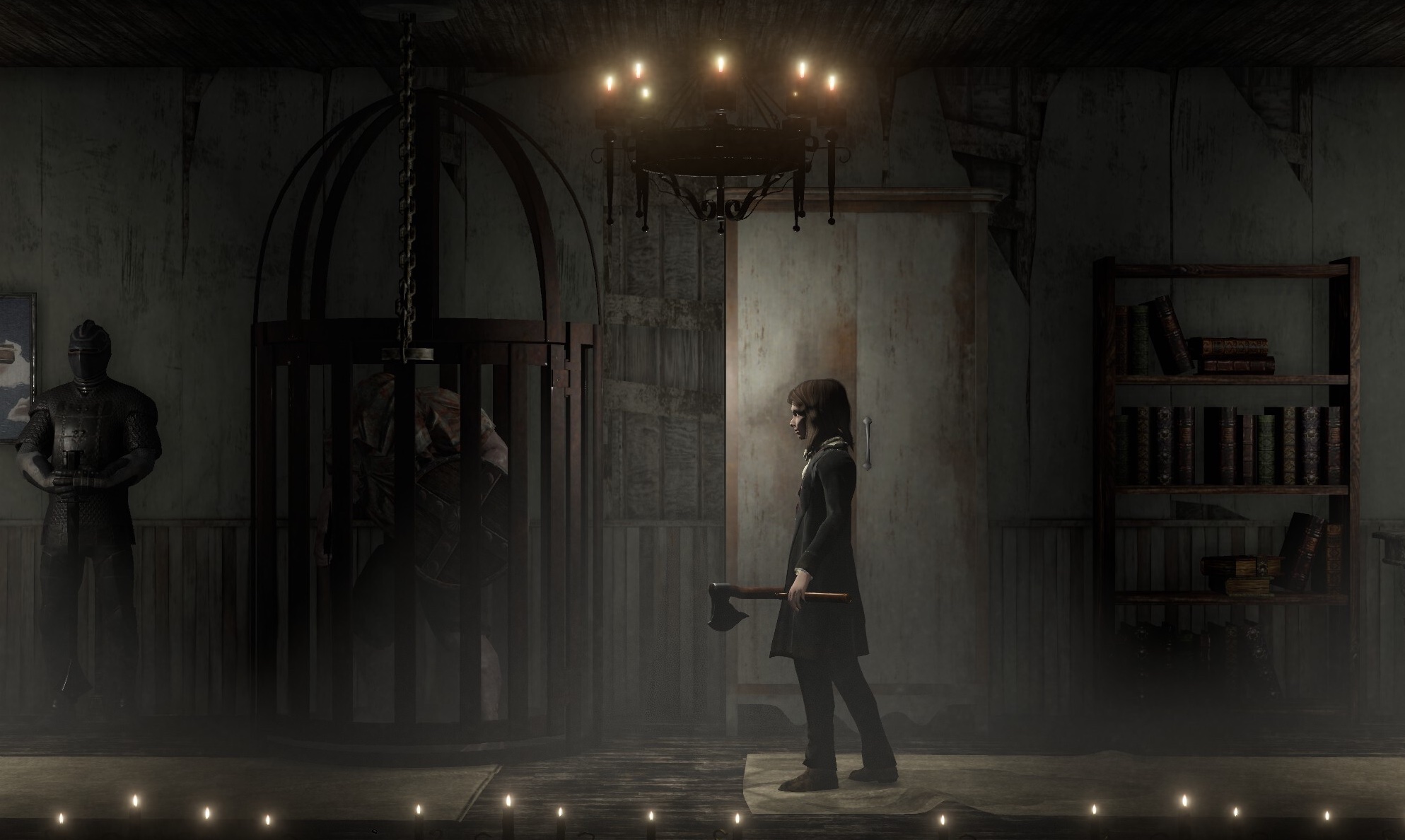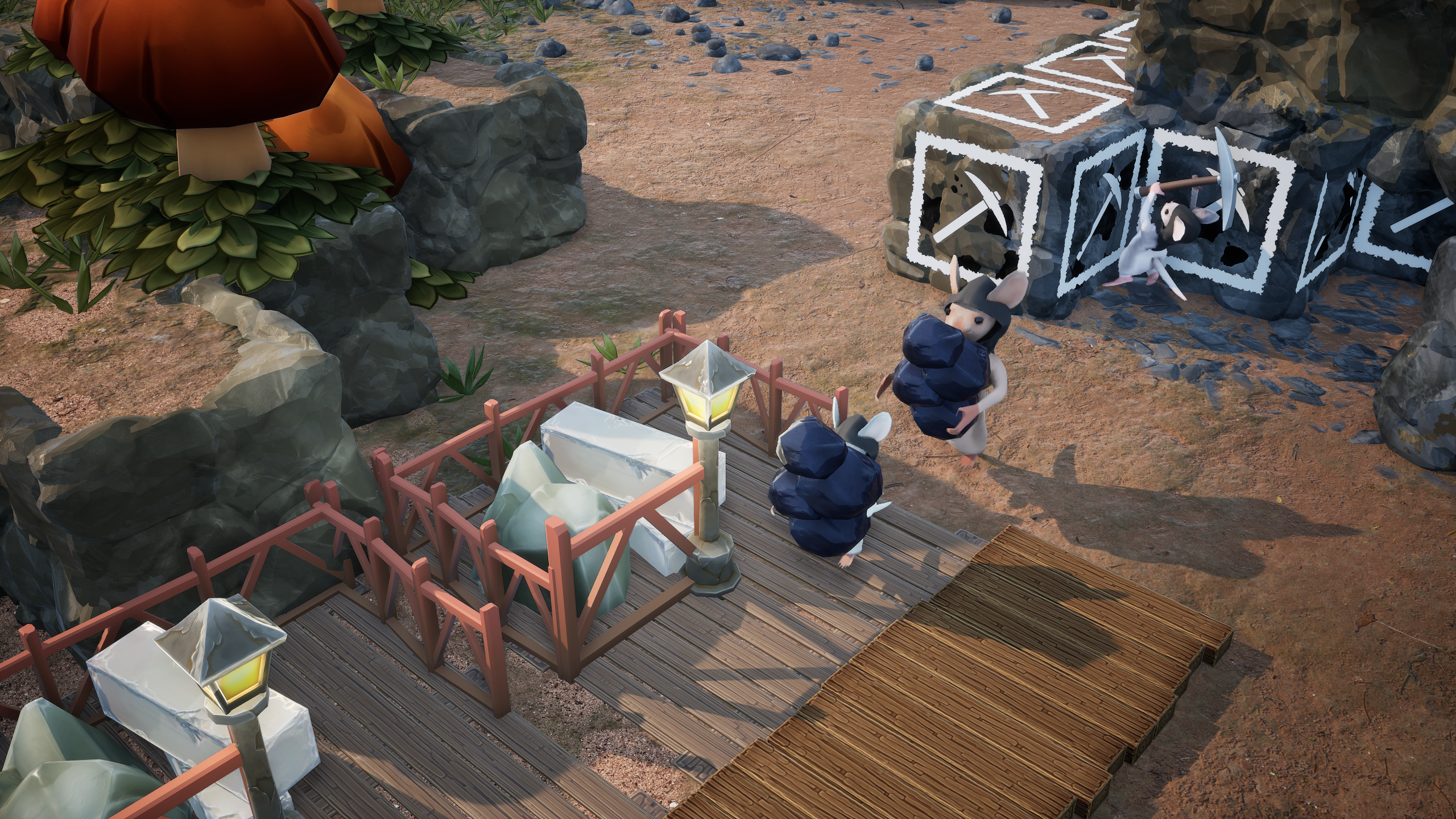
Withering Rooms launched out of early access last week, and it's well worth a look.
We can speculate about why there are a lot of horror games nowadays, versus barely none at all about 10 years ago. Maybe horror games are less expensive to make and thus more viable for smaller developers, especially when the unheimlich effect of early 3D graphics is so suited to the genre, not to mention the benefits that darkness and repetitive labyrinthine interiors may have on smaller development budgets. Maybe it’s an unconscious push back against the brash, saccharine vibe of most popular contemporary videogames; if the Fortnite-ification of everything sets your teeth on edge, maybe an unrelentingly violent game about psychopathic nuns will act as salve. OR: maybe people are just generally more messed up in the 2020s, and love to watch horrible things and be scared.
I like to speculate but I don’t know why there’s nearly a dozen new horror games on Steam every week, not counting the extremely low-effort entries. But I do know that Withering Rooms enters a crowded indie horror market. And despite ticking a lot of horror cliche boxes, it manages to be interesting all the same. It’s set in an ailing Victorian-era mansion which has devolved from coal baron’s home to cholera hospital to mental asylum. I reckon horror games don’t always need to be set in filthy old mansions, but I may be in the minority.
Withering Rooms messes with the screwed-up mansion formula just enough to interest me, though. Protagonist Nightingale has fallen afoul of an especially nasty phenomenon affecting the mansion, namely, she’s become stuck in a dream. It’s not a nice dream: it re-imagines the mansion as a stomping ground for all manner of accursed wraiths and psychos. Add to that surreal premise a wry take on 19th century period drama severity, and Withering Rooms’ tone is appealingly askew.
We never learn why or how Nightingale was touched by the looping horrid dream phenomenon: we meet her as if she’s been stuck in this cycle for eternity. Within 15 minutes of booting Withering Rooms she’s burned alive by a witch, and after this fatal altercation, the asylum administrator—whose admin skills admirably extend to dream states—explains that when I die I “awake anew” in the mansion. To make matters slightly more problematic, the layout of the mansion shifts with every death.
(Image credit: Moonless Formless)
Yes, Withering Rooms has—brace yourself—roguelite elements. I didn’t hold this revelation in my back pocket to trick you: it’s more that its handling of death isn’t as punishing or annoying as most proper roguelites. Upon death you’ll lose most items, but crucially, not key items, nor the armor you’re wearing. And despite the mansion’s layout always shifting, it’s easy to make your way around. After finding important key items, passing the first hour of the game takes about 30 seconds on respawning.
The cyclical nature bolsters the concept of reliving the same horrendous dream over and over again, while gradually discovering a way to break the cycle. Evidence abounds that maybe there isn’t a way to break the cycle, as Mostyn House is populated by various sickly long termers who have been imprisoned in the dream for aeons. In this way, its structure is closer to Deathloop, but on a moment-to-moment basis it feels more akin to post-Dark Souls metroidvanias like Salt and Sacrifice or Ender Lilies. The latter, because Withering Rooms is also a stat-driven RPG, with detailed combat and an increasingly improvisational take on solving encounters. Stealth, traps, decoys, and a surprisingly varied magic system can be used to evade the mansion’s gangly monstrosities, as can more conventional melee weapons like axes and cleavers.
(Image credit: Moonless Formless)
It’s fun to make a lot of noise, attract a room’s weirdos towards a door, pass through it, place a hex on the door, and then watch them perish. But using magic spells raises your “curse” meter, which is similar to sanity meters in a lot of other horror games. The higher your curse level the creepier the world becomes, and the more densely populated with foes it gets, and the more likely you are to die.
By the two-hour mark I’ve met a Butcher Surgeon, a Filthy Wretch, and discovered a mysterious passage under an inconspicuous drawer. I’ve also entered a portal into Nowhere and discovered The Wrong Room, which is accessed via the opening and shutting of any given door three times, before entering it on the fourth. I got slaughtered in a hedge maze. In its early hours, Withering Rooms has a promising sense of depth: it feels riddled with bizarre secrets and suss side passages. After 18 months in early access, it’s now completely finished, and well worth a look.



